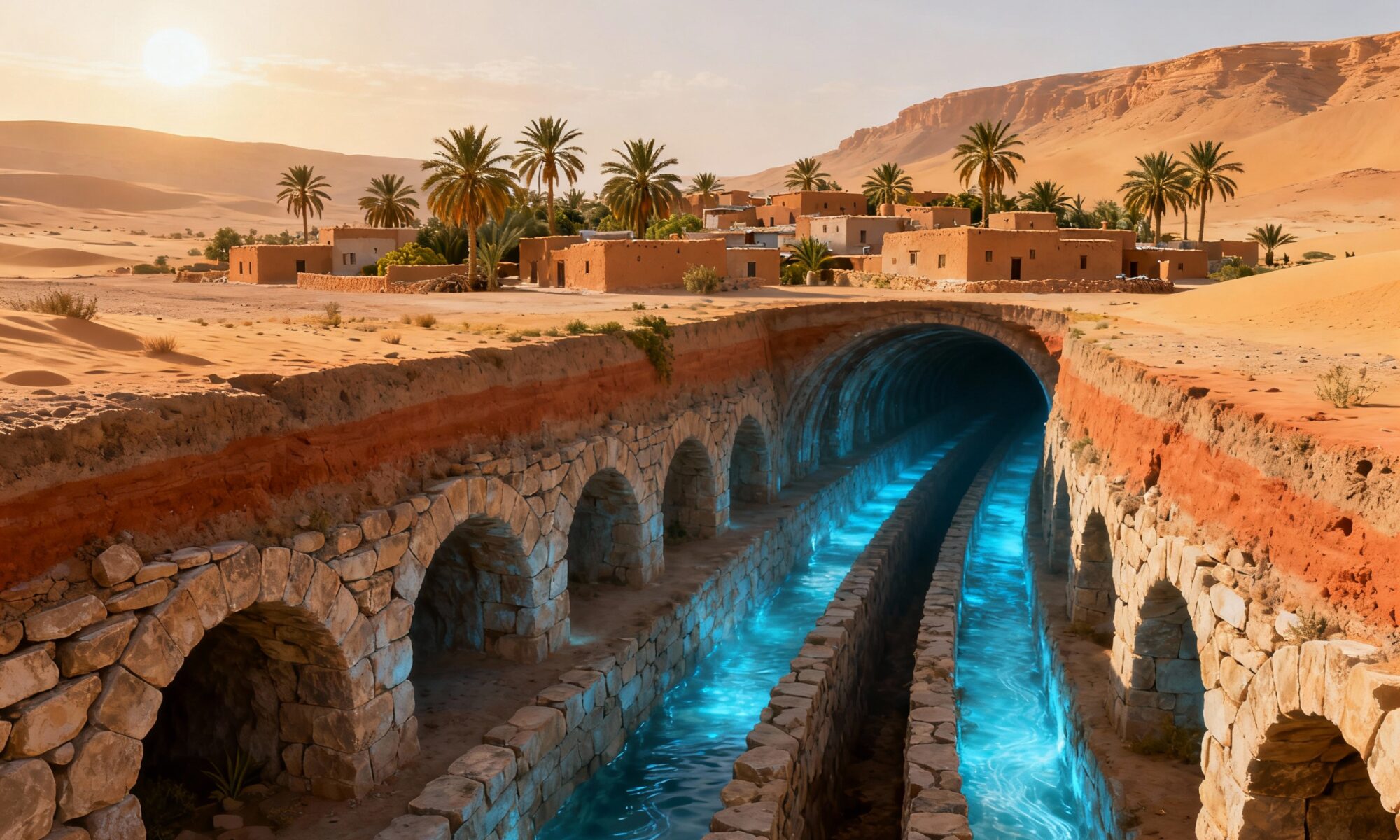Who Were the Garamantes?
Flourishing from roughly 500 BCE to 500 CE, the Garamantes were long misunderstood by history. Early accounts from Greek and Roman historians like Herodotus and Tacitus painted them as savage desert-dwellers and troublemakers on the edge of the Roman Empire. For centuries, this was the accepted narrative. However, modern archaeology has peeled back the sands of time to reveal a far more sophisticated reality.
The Garamantes were not simple nomads. They were the rulers of a powerful, centralized state with a fortified capital, Garama (modern Germa). This bustling urban center was home to thousands of people. From this base, they controlled some of the most crucial trans-Saharan trade routes, growing wealthy by trading salt, precious stones, exotic animals, and enslaved people with the Roman Empire to the north and other African societies to the south.
But how could they support such a complex state in one of the driest places on Earth? The answer lies beneath the ground.
The Challenge: Taming the Desert
The central Sahara is hyper-arid. With virtually no rainfall and scorching temperatures, surface water is almost non-existent. Without a reliable water source, large-scale agriculture is impossible, and without agriculture, you cannot sustain cities or a large, sedentary population. The Garamantes faced a fundamental problem: their ambition was urban, but their environment was desert.
They knew, however, that deep beneath the sand and rock lay a hidden resource: vast aquifers of “fossil water.” This was ancient water, trapped underground for thousands of years from a time when the Sahara was a much wetter, greener place. The challenge wasn’t a lack of water, but how to access it and transport it to where it was needed.
The Ingenious Solution: The Foggara System
The Garamantes’ solution was the foggara, a type of underground water channel also known as a qanat in other parts of the world. While the technology wasn’t unique to them, the sheer scale and audacity of their network was unparalleled in North Africa.
A foggara is, in essence, a man-made, gently sloping underground river. Here’s how they engineered it:
- Tapping the Source: First, they would locate an aquifer, typically at the base of a mountain range or escarpment where the water table was closest to the surface. They would dig a “mother well” down to this water source.
- Mastering the Gradient: This is where true genius came into play. Using remarkable surveying skills, they calculated a precise, gentle downward slope for a tunnel that would stretch for kilometers. The gradient had to be perfect—too steep, and the flowing water would erode and collapse the tunnel; too shallow, and the water wouldn’t flow at all.
- The Long Dig: With the path plotted, they dug the tunnel. Critically, these tunnels were excavated horizontally into the earth, often for distances of 3 to 5 kilometers (and sometimes much more). To avoid the intense desert heat and minimize evaporation, the entire channel was kept underground until it reached its destination.
- Vertical Access Shafts: Every 20 to 30 meters along the tunnel’s path, they dug vertical shafts to the surface. These shafts had three vital functions: they allowed workers to remove spoil during construction, provided ventilation, and served as access points for future cleaning and maintenance. From the air today, the collapsed remains of these shafts look like long, dotted lines stretching across the desert floor.
The scale of this operation was monumental. Archaeologists have identified over 600 foggara systems in the Garamantian heartland, with a combined length of over 1,600 kilometers (1,000 miles) of underground channels. The construction required moving millions of tons of earth and rock, a task that would have demanded a huge, organized labor force under the command of a powerful central authority.
From Barren Sands to Verdant Oases
The foggara system utterly transformed the Garamantian landscape and society. By channeling a continuous, year-round supply of water, they turned barren desert valleys into vibrant, productive oases. Satellite imagery and archaeological digs have revealed extensive field systems where they cultivated wheat, barley, sorghum, dates, figs, grapes, and olives.
This agricultural surplus was the bedrock of their civilization. It fed the population of Garama and other towns, enabling a complex social structure of rulers, priests, artisans, and farmers to develop. Control over water was control over life itself, cementing the power of the Garamantian kings. The wealth generated from their farms and oases, combined with the profits from trans-Saharan trade, funded their military power and their magnificent kingdom.
A Cautionary Tale Written in the Sand
So what happened to this brilliant civilization? The same source that gave them life may have ultimately led to their decline. The Garamantes were mining “fossil water”—a finite, non-renewable resource.
After nearly a millennium of intensive use, the underground water table began to drop. As it fell, the highest, oldest foggara intakes ran dry. The Garamantes had to dig deeper and further, but they were fighting a losing battle. Sometime around the 5th century CE, the system began to fail on a massive scale.
This environmental collapse was likely compounded by other factors, including the decline of their primary trading partner, the Roman Empire, and increased pressure from nomadic groups. Without the water from their foggaras, the fields dried up, the cities could no longer be supported, and the Garamantian state crumbled. The desert they had so brilliantly tamed slowly reclaimed its territory.
Today, the ghost-like traces of the foggara shafts, visible from space, are the primary legacy of this forgotten empire. They are a testament to an incredible feat of ancient engineering and a stark, timeless warning about the dangers of over-exploiting our most precious resources.
